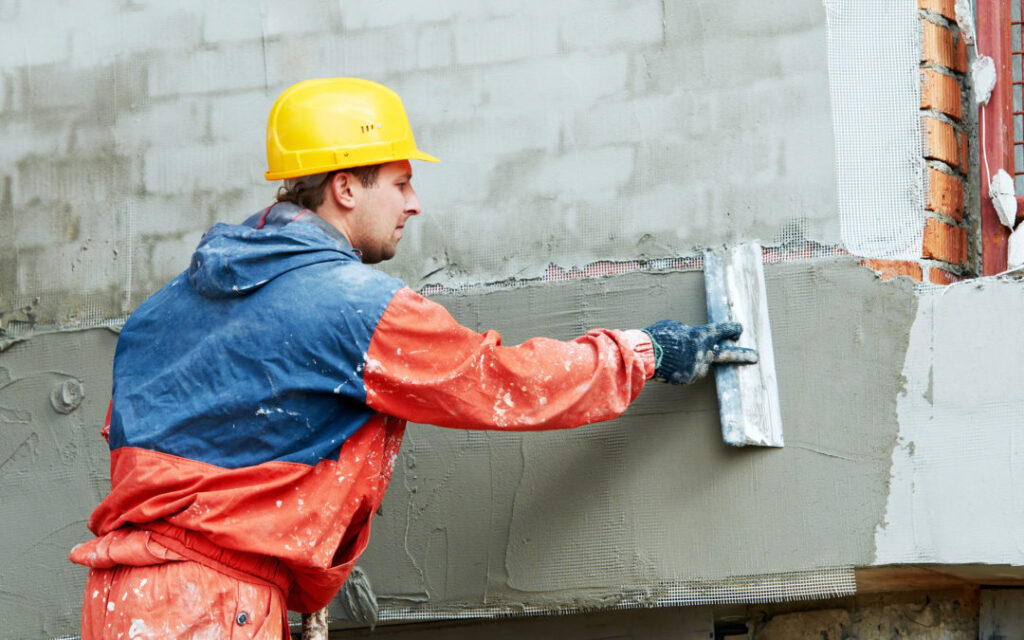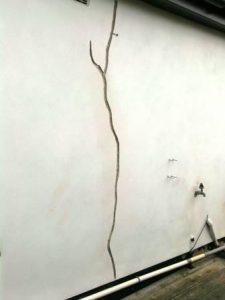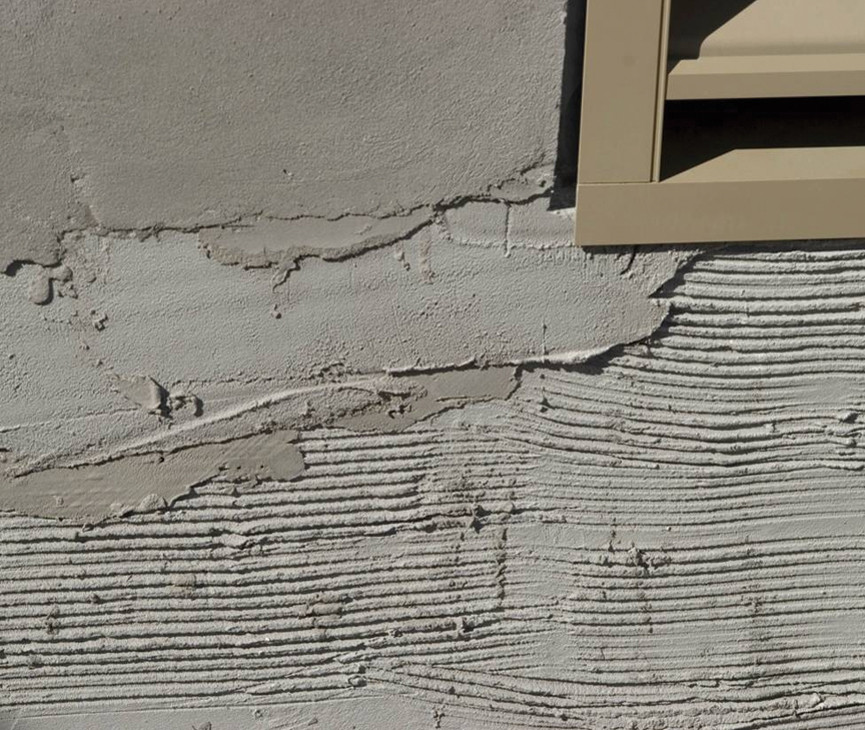What’s The Difference Between Stucco Repair and Stucco Remediation?
If your home has stucco, then congratulations, you have one of the most rich-in-personality and presently trendy types of exterior finish out there. Stucco has found itself in places where nobody would expect to see it these days – temperate and even outright cold climates.
This concrete phase (one of four) used to be mostly associated with tropical and desert climates, due to its UV resistance and good insulation against heat. Insulating against cold isn’t, indeed, one of its strong suits, but other insulation materials have made it practical enough to use outside its comfort zone.
But, as a homeowner with stucco, you know how fragile the stuff can be. It’s the softest, most easily-damaged phase of concrete, and strong winds and major temperature fluctuations can cause it to chop away, fracture, or crumble over time. While repairing it may not be your number one priority if you have major home repairs on your dossier, leaving it to its own devices is a bad idea. Moisture can creep in, and the structure of your house can be further compromised as this protective layer is weakened.
Stucco Repair
Stucco repair is exactly how it sounds – finding a damaged part of the stucco, and simply repairing or reapplying the concrete layer. It’s basically patching the damage. In mild enough cases, this is actually effective, and obviously the more cost-effective choice. However, if stucco damage is deep or widespread enough, this would be something of a band-aid on the problem, so to speak.
If moisture has gotten in, the layers underneath have been damaged, or the overall structure of the stucco concrete layer has been weakened sufficiently, the damage will just persist, no matter how much patching you do. If you go this route with severe damage, it’s very much like the old cartoon trope of the character repeatedly plugging leaks on a boat or a dam, and running out of fingers comedically. Only, in this case, it’s not very funny, is it?

Render Crack Repair: How To Repair Cracks In Rendered (or Stucco) Walls Permanently
Render Crack Repair Kit
If you need to affect a render crack repair, we have assembled a kit for you at a discounted price, just click this link: render crack repair kit. Please read on to find out why it works so well.
Why Does Render (Stucco) Crack When Used On Walls
Cracks appear in rendered walls of buildings because the ground actually moves, and the building actually moves, and with time and the wet/dry/wet/dry annual seasonal patterns, the ground swells-and-shrinks and the building settles somewhat unpredictably over the decades. The rendered walls don’t stretch, not worth-a-hoot. When the building moves, then one part of the foundation goes a bit up, down or sideways relative to another part, and then the render cracks. Render crack repair is then required to keep the building watertight, this article shows you how.
Why Do Repairs To Rendered / Stucco Walls Fail?
Render crack repair is often done with various caulks or cement, and usually the crack opens up again. There are two reasons: The cement patch can’t stretch, and or the caulk did not stick. These have underlying them one common denominator: the building is still moving. Patching the crack did nothing to stabilize the foundation, or change the seasonal swelling-and-shrinkage of the ground. The crack is going to continue to open-and-close, and usually widens, on-the-average, as time goes by.
Let’s say that we have a reasonably stable building, and the settling factor happened over many years. However, the ground swelling-and-shrinkage happens seasonally. So, eventually a crack starts, and over many years it slowly widens. But, from winter-to-summer-to-winter-to-summer, it is also opening-and-closing-and-opening-and-closing, due to the seasonal ground movement. So, the crack might be 1/16” one year, and 1/8” five years later. But, from winter-to-summer-to-winter-to-summer, it might open-and-close by 1/16” more-or-less. Early in the cycle we have a crack that goes from zero to 1/8”. Later in the cycle it might go from 1/16” to 3/16”, and then 1/8”-to-1/4”, and so-on. There just is not anything that will stretch that much and still stay stuck to the render, which has not got great tensile strength anyway. If you even used an epoxy glue in the crack, it would just pull off some render when the building asked the crack to open-up more.

STUCCO & REPAIR
Stucco, another commonly used material in the residential and commercial construction industry, is an exterior wall mortar/coating made of cement, lime, and sand. Stucco provides an economical, durable, decorative and low-maintenance finish for homes and commercial structures alike.
Stucco can be troweled, floated, or spray applied and can be finished in your choice of texture types.
Dash finish
Lace finish
Sand or float finish
Smooth finish, depending on cement and aggregate size in the mix
stucco mix for scratch, brown, and finish coat applications. also offers base coat stucco and fibered stucco.
Base Coat: Scratch & Brown Stucco – A gray, blended, water resistant, portland/lime cement-based material used for scratch and brown coat stucco work.
Finish Coat Stucco – A blended, decorative, water resistant, portland /lime cement based, finish-coat stucco for use as a decorative finish coat for vertical and overhead application.
One Coat Fibered Stucco – Factory blended mixture of portland cement, sand and fiber reinforced polymers and packaged in moisture resistant bags.
Surface Bonding Cement – A fibered, structural coating used to strengthen existing masonry walls or to create mortarless block walls. Can also be used as a masonry parge or finish coat or as a scratch and brown coat stucco.
Mortar Mix Type S – A high-strength mortar mix that can be used as a masonry parge or finish coating or as a scratch and brown coat stucco.
Water Resistant Stucco – Water Resistant Stucco is a portland/lime cement-based stucco with crystalline water-repellent technology. Designed for use as a decorative finish coat that reduces water penetration while maintaining a breathable finish.

When Looking For Stucco Springs
Pikes Peak region is known for gorgeous views, great weather, and beautiful homes. Much of the architecture in our area showcases the aesthetic of our south-central Colorado plateau, both in finish and colors. Leading this aesthetic is stucco, a durable, fire resistant, eco-friendly option that lends ambiance and class to your home or business. Stucco makes a statement, and a good one, on any building.
Stucco Contractors Springs is a locally owned and operated company that knows stucco and interior plaster. It is all we do, and we do it well and have for many years. Our experienced staff knows how to create color, texture, and finishes to complement your home or interior, taking advantage of natural shading and finish to increase the value of your property and the curb appeal.
When you think of a beautiful building in Colorado Springs that has presence, ambiance, and a timeless quality to it, it is likely the exterior is clad in stucco. Long considered an upscale finish, stucco is surprisingly more affordable than many realize, especially when the long-term return in durability and staying power is figured in. Stucco and plaster are both versatile, come in a wide range of colors and textures, and can be adapted to mimic other materials at a much lower cost. One such example is Venetian plaster, often used in place of expensive carved marble. Ask us for a free quote to add timeless beauty and increased value to your property
Stucco is tough stuff. A mix of Portland cement, lime, sand, and water, stucco requires minimal maintenance, is fire resistant, provides insulation value, and is protective. It also breathes, the permeability allowing proper airflow in and out of your home. Stucco continues to cure over time, creating a more durable finish that can last 50 years or more. Many buildings from ancient Rome, Greece, and Egypt were finished in stucco, and thousands of years later, that same stucco is still intact
Stucco comes in a variety of colors and textures, and an experienced craftsman can give you a myriad of decorating possibilities for patterns, finishes, and colors. When we provide a free quote, we also provide suggestions for the best kind of stucco or plaster for your project, whether it is traditional, acrylic, elastomeric, or a synthetic system.

WHY PATCHING OR PAINTING YOUR STUCCO CAN BE DANGEROUS
Stucco houses are unique and beautiful to see in any neighborhood. They are the type of home that makes any owner proud. Unfortunately, many contractors do not know how to properly build or repair stucco homes and those proud homeowners may soon find themselves facing major structural damage and thousands of dollars in repairs.
Much of this damage comes from improperly patched or painted stucco. Unlike in some other home building materials, cracks in stucco should not be quickly filled in or painted over. Rather than covering a small cosmetic flaw, you or a misguided contractor might be covering dangerous water damage that can threaten the structure of your home. This is why it’s best to hire an experienced stucco contractor to perform inspections and repairs of your beautiful stucco.
WHY CRACKS FORM
Like all homes, stucco houses will see wear and tear from the elements over time. This is especially true in more temperamental climates. Stucco was originally intended for hot, dry climates, but their popularity has stucco homes in wetter, colder climates now, too. Both moisture and cold can wreak havoc on stucco if the wrong kind was used on a home. Cycles of warm and cold weather cause the stucco to expand and contract, which creates cracks over time. Then these cracks are further exacerbated when water and ice get in.
Once your stucco has cracks and fissures, moisture has an easy path straight into the walls of your home; with it comes mold and rotting. This is why it is so important to not simply patch or paint over stucco. Cracks can be an important indication of underlying water damage that needs to be looked at before repairs can be made, not just covered up.
WHY PATCHING AND PAINTING ARE COUNTERINTUITIVE
Many contractors or homeowners reach for the caulk or paint when they see cracks in stucco walls, but doing so is ignoring the original problem and creating a larger one. Homeowners may not realize there are different kinds of stucco and the type on their house may not be ideal for the local weather. If this is the case, no amount of patching or painting will prevent future cracks, and it may be best to replace problem areas with a more appropriate kind of stucco installed by the experts.